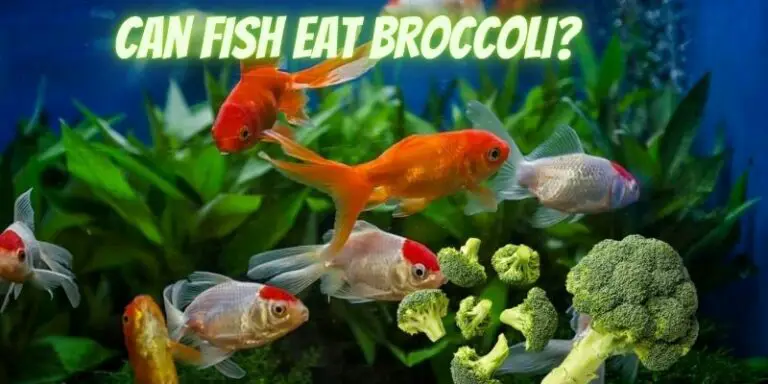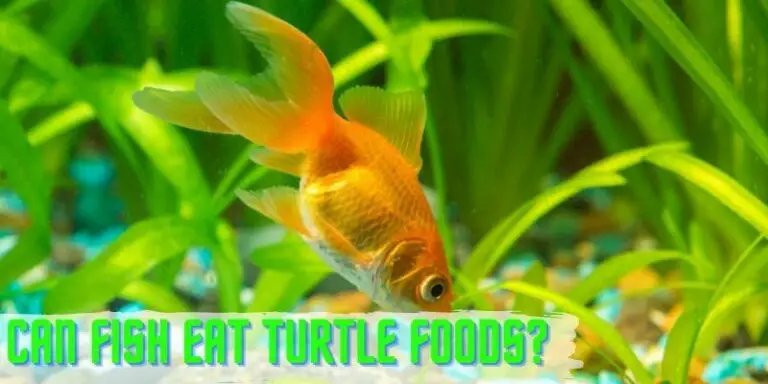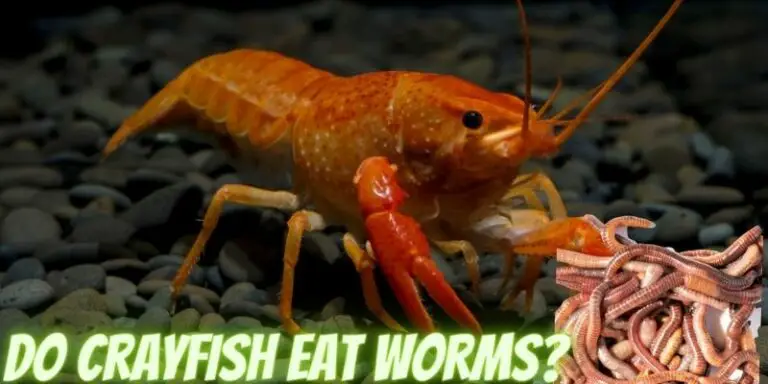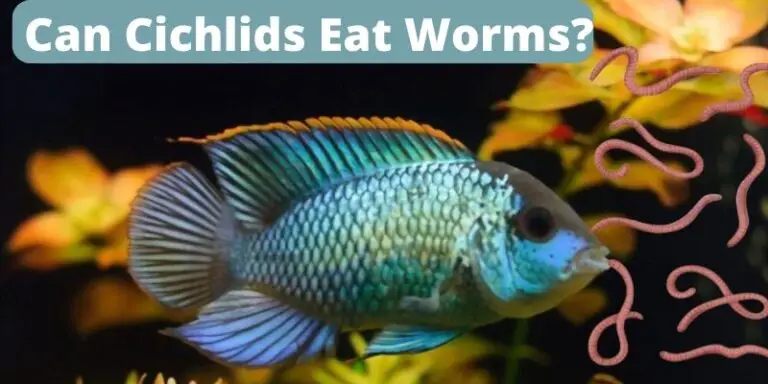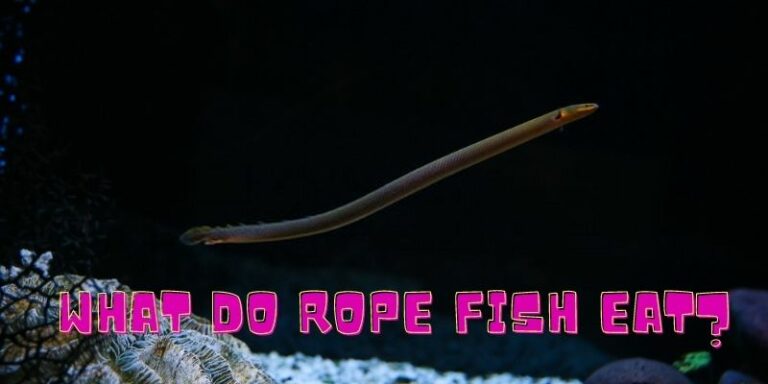What Do Mollies Eat? (Favorite Foods & Feeding)
Molly fish’s eating behavior is slightly different than other fish, but before feeding them, you should know what do mollies eat. Mollies eat freshwater flakes, worms, krill, insect larvae, small crustaceans, brine shrimps, pellets, and gel food.
What Do Mollies Eat In The Wild?
Mollies are omnivorous, so their diet is comprised of both plant-based and animal-based food. However, they prefer eating meat in the wild, typically insect larvae, small insects, small crustaceans, and occasionally even small fish.
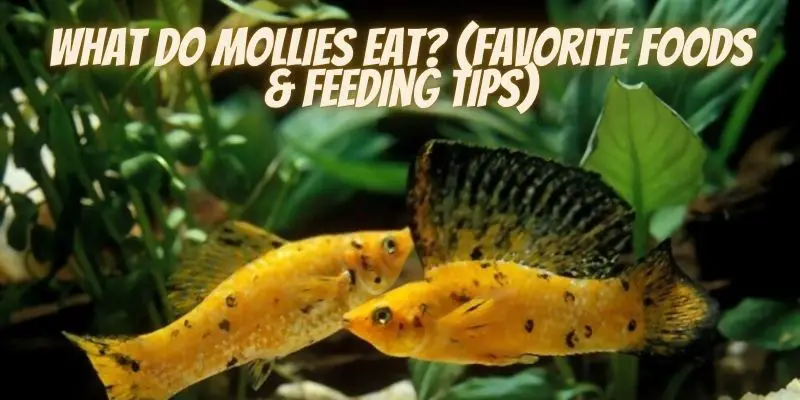
Hence, they also enjoy eating fruits and vegetables, if available to them. Moreover, the diet of mollies consists primarily of plant stuff, yet they will consume large amounts of meat if they want.
Mollies will consume a wide variety of algae, even a great deal of it. Additionally, they will eagerly accept any live food, such as live brine shrimp, bloodworms, daphnia, and worms.
Best Foods To Feed Mollies
These fish must eat a range of things and maintain a balanced diet because they are omnivores. The best food to feed mollies is listed below.
Freshwater Flakes
Freshwater flakes are perfect for omnivorous fish, and they are unquestionably one of the Mollies’ greatest foods. Omega one freshwater flakes specifically meet the nutritional requirements of mollies.
It has a significant amount of plant content, which means that it is rich in vitamins and nutrients, as well as a big percentage of meat-based protein, so your Mollies’ nutritional demands will be fulfilled without a doubt.
They also do not contain any fillers or additives. Moreover, the Omega 6 fatty acid in this food improves the digestion of your fish and benefits your Mollies’ immune systems.
Brine Shrimp
Brine shrimps are nutritional, protein, and vitamin abundant. Even though they are loaded with proteins, they also include other nutrients that Mollies need.
This makes shrimp a tasty occasional treat as well as a beneficial diet. In contrast, freeze-dried foods are freed from bacteria and parasites more than live meals.
To put it another way, it is a much safer option than live fish foods. Additionally enhanced with pigments, brine shrimp will retain their lovely colors.
The brine shrimps are unquestionably beneficial for healthy digestion and a robust immune system.
Krill
Kills are also a great part of their diet, making them a delicious treat on occasion for the omnivorous.
Although these are rich in vitamins and minerals, 60% of the entire weight is made up of pure crude protein.
So, there is more than enough protein in these krill for your Mollies to eat, grow, and become healthy.
Additionally, it has a lot of calcium, which is good for bones, teeth, scales, and gill coverings.
On the other hand, freeze-dried krill are completely safe for Mollies to eat as they are free of bacteria and parasites.
Bloodworms
Since Mollies prefer variety, so giving them occasionally some meaty bloodworms makes a pleasant snack and reward.
Iron and essential proteins are abundant in them, making them beneficial for mollies to eat.
However, freeze-dried bloodworms are completely safe for Molly to eat and are free of bacteria and parasites, just like krill and shrimp are.
Daphnia
Small crustaceans called daphnia are a lovely, tasty surprise for your Mollies. In freeze-dried form, they are free of bacteria and parasites that are hazardous to fish that can be found in live foods.
Being safe for consumption is always important. Daphnia will not cause the water to become cloudy like many other fish foods, putting less strain on the filter and requiring less tank maintenance.
The high protein, vitamin, mineral, and nutrient content of daphnia is what your Mollies need to grow big, happy, powerful, and healthy in every way.
What Vegetables Do Mollies Eat?
In addition to their excellent flavor, mollies like the variety of different veggies. It would be best to feed mollies veggies for their best development, metabolism, and growth. The list of vegetables that mollies eat is given below.
Spinach
Spinach is another healthy option. Protein, minerals, and other vitamins are all abundant in spinach.
Without a doubt, it is one of the best plant foods to feed Molly. It is recommended to feed the fresh organic spinach to mollies.
To ensure that it does not include any dangerous pesticides, fertilizers, or other chemicals, you want it to be organic.
Give your Mollies a few pieces of spinach after it has been boiled until it is tender but not mushy.
Cucumber
Cucumber is safe for mollies to eat and has high levels of vitamins C and K, which are good for fish health.
Because of its smooth texture and watery flavor, they prefer eating cucumbers. Before feeding cucumber to mollies, wash the cucumber thoroughly to remove any toxic chemicals or additives from it.
After removing the seeds, chop them into little pieces. Moreover, the skin of a cucumber contains most of the nutrients that are good for the health and metabolism of mollies. Therefore, do not peel the skin due to its high fiber quality before giving it to your mollies.
Broccoli
Like other veggies, broccoli is safe for mollies to eat. The nutrient content of broccoli is great, and it offers a lot of health benefits.
It is rich in fiber, vitamin C, antioxidants, B vitamins, A vitamins, and E vitamins, as well as potassium, calcium, salt, zinc, magnesium, manganese, iron, and other minerals and nutrients. Before adding broccoli to your fish tank, cut it into smaller pieces.
Avoid overcooking your broccoli to prevent water contamination and poorer tank water quality.
Green Beans
Green beans make a fantastic veggie to feed your mollies. These are beneficial for bloating issues due to their high fiber content. Therefore, Green beans can be fed to fish more frequently than other vegetables.
Lettuce
Lettuce is a significant source of essential nutrients, vitamins, and minerals that provide a range of nutritional and health benefits.
Moreover, Antioxidant-rich vitamin C supports the immune system and helps keep teeth and bones strong and healthy.
On the other hand, it has low calories but high fiber content which is ideal for a balanced diet of mollies.
Zucchini
Among mollies, zucchini is an attractive vegetable. So, adding them to their diet is a healthy and advised choice for the maintenance of their health.
Furthermore, it contains vital vitamins, minerals, fiber, and nutrients, including potassium, manganese, and folate. It also contains crucial nutrients like vitamins A, C, and K.
Carrots
Carrots appeal to Mollies because of their sweet flavor. If the carrots are chopped and cooked, mollies can consume them.
Carrots can be cooked for 10 minutes or more in hot water, then sliced into tiny pellet-sized pieces before feeding, which is ideal for your mollies.
How To Feed Mollies?
The next question is how to feed Mollies after understanding what to feed them. Since Mollies are simple to feed, maintaining them is one of the hassle-free tasks. So, to feed mollies, follow the steps given below.
Select high-quality food to feed your mollies. When choosing vegetables, look for ones that are weighty, firm, and free of bruises.
If you intend to feed them worms, shrimps, flakes, and pellets, then purchase the best quality of them too.
Before feeding mollies or any food, wash it properly. All chemicals and pesticides should be eradicated to avoid damage to the fish.
For serving vegetables to mollies, keep in mind that vegetables should be well washed, peeled if necessary, and cut into smaller pieces before serving. The slices must be cut into tiny pieces so that fish can consume them easily.
Moreover, Certain vegetables must be boiled or cooked, whereas others do not. Therefore, heat or boil the hard vegetables before giving them to the mollies. Serving flakes and pellets
It is simple to serve worms, shrimps, pellets, and flakes to mollies. You may drop them into the aquarium to feed the fish. You can feed them with a fork, your fingers, tongs, or anything else.
In terms of meat products, Regular feeding of this diet may have an impact on the reproductive and digestive systems of your fish. Moreover, many meat foodstuffs, like a pig, chicken leftovers, etc., have a high fat content. So please do not include them in the diet of mollies.
Additionally, keep Molly fish away from fatty foods. Make sure not to put the meal ingredients in oil when cooking homemade food for your fish. For Mollies, it is not good food to eat.
As mollies look irresistible to food, overfeeding is an issue. Mollies would eat as much food as you give them repeatedly.
This is an issue, especially for beginners who might give in to the need to feed their molly fish more frequently than is advised for mollies.
The reasons that make overfeeding problematic are too much food will increase your fish’s waste production, which will contaminate the water, and overfeeding results in several health problems, including constipation and other digestive problems.
Moderation in feeding your fish is essential to avoid all these issues. One or two times every day, give your mollies a minimal amount of food.
How Often & How Much To Feed Mollies?
Feeding them twice or thrice a day is recommended to avoid overfeeding. With that, they will be fine. Note that they do not bother if you feed them twice a day.
They often finish their meal in just five minutes, and if you keep adding food to the tank, they will keep eating but spit it out, which means the food will eventually settle at the bottom and cause a major mess in the clean water.
It is a sign that they had too much food when you feed them and see them spitting it out. However, despite being full, they frequently seek the food that has been spitting out.
So, you do need to follow a regular routine when it comes to feeding Mollies. Moreover, it is important to avoid overfeeding any fish because it can lead to some serious issues.
Feed your Mollies but not more food than they can finish in around five minutes, as per the amount of food you should give them.
If you give them more food than that, you overfeed them. Most people decide to feed them twice a day, and it is recommended to space out these feedings at 12-hour intervals.
The best results are typically obtained by feeding your Mollies at those times or something close to them.
As They enjoy eating any food offered, you must manage what you feed them, how much you feed them, and how frequently you feed them.
What Do Black Mollies Eat?
A well-balanced diet for black mollies should include frozen or live items like daphnia or bloodworms together with high-quality fish flakes or pellets. Some of the preferred food categories to feed black Mollies are given below.
Flakes
Most flakes available today are of high quality and provide the foundation of a diversified diet for tropical fish, including Black Mollies.
On a specific note, Tetra Flakes and Fluval Bug Bites Flakes have been effective for them, and both appear to be easily consumed by Black Mollies.
Pellets
Pellets are welcome by black mollies, who will happily eat them. Their preferred pellet is a small floating pellet, and some pellets float while others slowly sink.
Due to this, Black Mollies have a choice in how they want to eat. However, it is recommended to feed flake food and pellet foods together once a day to them.
Wafers
Black Mollies prefer either tiny wafers that float, like Tetra Color Crisps, or wafers that sink composed of algae.
Put a couple of huge algae-based wafers in the tank, and the Black Mollies will finish them after several hours.
Gel Foods
Like the one produced by Repashy, gel meals are a wonderful addition to the Black Molly feeding options.
Black Mollies will be attracted to a piece of gel food that you have dropped into their aquarium very soon.
What Do Dalmatian Mollies Eat?
Although Dalmatian mollies are omnivorous, they are mostly herbivorous and only take proteins rarely.
In the wild, they typically eat algae, though they occasionally eat rotifers and tiny crustaceans.
They can eat dried vegetable-based diets. So, these fish also appreciate a balanced diet consisting of vegetables like lettuce, spinach, and zucchini, in addition to algae.
On the other hand, a high-protein snack is also accepted by dalmatian mollies. Daphnia, brine shrimp, and live or frozen bloodworms are all acceptable.
Can Mollies Eat Tropical Fish Food?
Yes, mollies can eat tropical fish food. Although, mollies live in freshwater habitats as well as saline regions, just like tropical fish.
So, they do not find it difficult to eat their food. Moreover, the tropical fish food provides all the nutrition mollies require, such as API Tropical flakes.
These flakes are full of nutrition so that they can be used as a staple food. You can also feed them tropical pellets.
It would be best to continue using tropical pellets for mollies. The nutrients your mollies need to stay healthy are all included in tropical pellets.
Because of their high-quality ingredients and simplicity of usage, tropical fish food Pellets are also recommended. Instead of using tropical fish food as a snack or treat, you can feed molly fish regularly without any worry.
Can Mollies Eat Pellets?
Another fantastic option for molly food is pellets. They can be stored for a long time and are simple to use.
Pellets come in a wide variety of forms and are readily available. They are available in a variety of sizes, from small to huge pellets.
Additionally, pellets are available with a variety of substances depending on the types of fish you have. Be aware of the amount you give mollies when feeding them pellets.
Mollies tend to eat as much and as frequently as you feed them. Overfeeding the mollies increases their risk of constipation and other digestive problems.
Additionally, overfeeding may cause the fish to produce more waste, which will contaminate the water.
Can Mollies Eat Goldfish Flakes?
Since mollies and goldfish are omnivores, their food is not much different. But goldfish do need more fiber in their diets than mollies, such as goldfish flakes and pellets. Goldfish flakes are safe for mollies to eat but are insufficient for mollies to survive.
Since the goldfish diet has less protein and fiber than typical tropical flakes, you can occasionally give your mollies goldfish flakes, but it should not be done frequently. The ideal meal to give them is regular molly fish food.
Can Mollies Eat Betta Food?
Mollies can eat betta food, but only occasionally. But it is not suggested. Compared to mollies, which are omnivores, betta fish are primarily carnivorous and need a diet with a higher proportion of meat-based proteins.
However, Mollies require more vegetables, plants, and algae in their meals than betta fish, even if they eat meat frequently.
So, Mollies can eat betta food, but they are not advised to do so regularly because it does not give them enough nourishment.
So, betta food is acceptable as an occasional treat or a rescue snack. Therefore, it will be sufficient for a day or two if you have betta food, although it is not completely efficient.
Can Molly Fish Eat Lettuce?
Yes, Molly fish can eat lettuce to get beneficial nutrients. As they are omnivorous, vegetables are also a crucial part of their diet.
Moreover, lettuce has a low-calorie count while being high in dietary fiber, which is usually a great balance for food.
Additionally, it is a significant source of essential nutrients, vitamins, and minerals that provide a range of nutritional and health benefits.
Antioxidant-rich vitamin C supports the immune system and helps keep teeth and bones strong and healthy.
Before giving them lettuce, make sure it has been blanched and chopped. There are no strict restrictions on the types of lettuce that can be consumed.
Both iceberg lettuce and romaine lettuce are acceptable. You can offer them either unblanched or blanched, but mollies would benefit more from the latter.
To keep the water clean, you must remove any residual food after three to four hours. If not, the food will become slimy and contaminate the water.
Mollies will not try to consume floating food. Thus, if the food you serve does not sink, you will need to make it sink. For this purpose, veggie clips are sold in the stores.
Can Mollies Eat Human Foods?
Mollies can eat human foods, such as they can eat meat, leafy vegetables, and fruits. Please do not overfeed since this is not the typical meal that mollies consume in the wild.
If you give them food found in the wild or fish pellets and flakes designed specifically for mollies, they will be in better health.
However, eating human food occasionally as a treat or in an emergency is acceptable. Some foods, like fruits and vegetables, provide extra nourishment to the diet.
Can Mollies Eat Bloodworms?
Bloodworms are a standard part of the diets of Mollies. When taken in moderation, bloodworms pose no threat to mollies.
Give mollies bloodworms once a week and supplement their diet with a brine shrimp and flakes mixture. Bloodworms are a major part of the carnivorous species.
Give bloodworms infrequently to mollies that are both omnivorous and herbivorous as carnivorous fish enjoy eating meat and are adept at doing so.
However, herbivores, even omnivores, will not be able to absorb that much protein and fat. So, give bloodworms to mollies in combination with other food.
Conclusion
Mollie foods we discussed in the post are the most nutritional foods you can offer to the mollies using a proper way of feeding.
You must keep in mind that feeding mollies is not a blind process. You need to make a schedule including the quantity and the frequency of the foods you will serve them.
